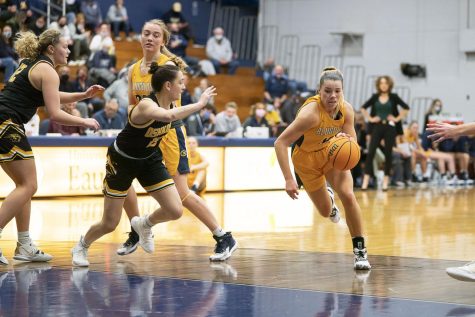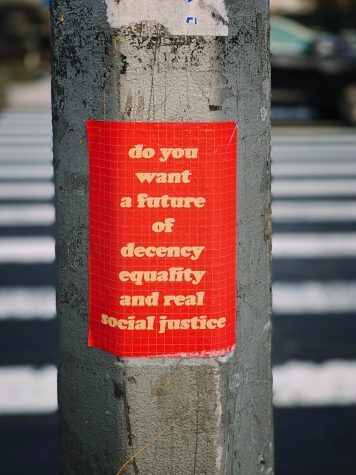Vigor in the Valley
Gearing up for winter biking with Jeremy Gragert
Photo by Clara Neupert
According to the 2012 National Survey on Bicyclist and Pedestrian Attitude Attitudes and Behaviors, 13 percent of bicycle accidents are caused by poor roadway conditions like snow or ice. Installing studded tires, like the ones on this bike outside of Hibbard, help with traction.
One morning in late November I woke up a half hour late. I scrambled to throw on a shirt and pull on some pants while brushing my hair at the same time. I realized I wouldn’t have enough time to walk to class. Hurriedly, I mounted my bike without my gloves or helmet.
As soon as my tires hit the road outside my house, I knew I had made a mistake. The road was covered in dark sheets of ice. All of the sudden, my tires slid out from under me. I glided across the road like a penguin on an iceberg. What hurt more than my knees and hands was my pride. I never, ever crash my bike.
After The Incident, I resolved to never ride my bike again, at least during the winter. I didn’t want to risk falling in front of an audience on campus. My commute to class would take an extra 10 minutes — oh, well.
My fall got me thinking: How do people who must bike function in the winter?
To answer my question, I turned to Jeremy Gragert, a representative on the city council for the Third Ward. As an advocate for alternative modes of transportation, Gragert served on the Bicycle/Pedestrian Advisory Committee.
Gragert said he does not own a car. Throughout the year, Gragert walks, utilizes the bus system and rides his bike.
“Biking really is the way I get around most,” Gragert said, “although sometimes I take the bus and bring my bike with me.”
Gragert gave me some tips about winter bike commuting last Friday.
Wear appropriate clothes
First and foremost, Gragert said he always wears a helmet, no matter the weather. Wearing a helmet is especially important when riding on slick roadways common during winter months.
“For $50 or $60, you can get a really nice helmet,” Gragert said. “I would not recommend getting a $20 one from KMart or something. And make sure it fits you right, too.”
It’s also helpful to wear a balaclava, which is a ski mask with a large hole for the face, under the helmet. On super cold days, Gragert said he wears a ski mask and several layers. He bought special gloves that keeps his hands warm and still allow for full use of the breaks.
Maneuvering on icy roads
As I learned the hard way, riding a bike on wintery roads is not the same as riding on roads in good condition. When faced with ice, slush and snow, Gragert said he takes everything a bit slower, especially corners. Also, he said he is careful not to slam on the brakes.
Another great investment is studded tires, Gragert said. Thicker tires grip the ground and decrease the chance of falling. However, a cyclist should always be cautious around ice, Gragert said, no matter how grippy their tires.
Take special precautions when biking during the night
A commuter is forced to travel in the darkness more often than daylight during the winter time. Gragert said cyclists should outfit their bikes with a white light at the front of their bike and a red light on the back. Having the rear light on a flashing setting will increase a biker’s visibility.
“I really like rechargeable USB bike lights. They’re super bright, too,” Gragert said. “You need nice lights that will last a long time. I’ve been using mine for many years.”
Gragert said he always wears a neon, reflective vest on top of his coat.
“People who are driving are not expecting to see bikes as much as they are in the summer, so they’re maybe not looking as much,” Gragert said. “You can really stand out by wearing a vest.”
Cyclists can avoid potentially dangerous roads by using the trail system specially made for walkers, runner and bikers.
“The best way to see the city is by bike,” Gragert said.
Neupert can be reached at [email protected].

Neupert is a fourth-year journalism student at UW-Eau Claire. She is the executive producer of Engage Eau Claire on Blugold Radio Sunday. In her spare time, Neupert's working on becoming a crossword puzzle expert.










